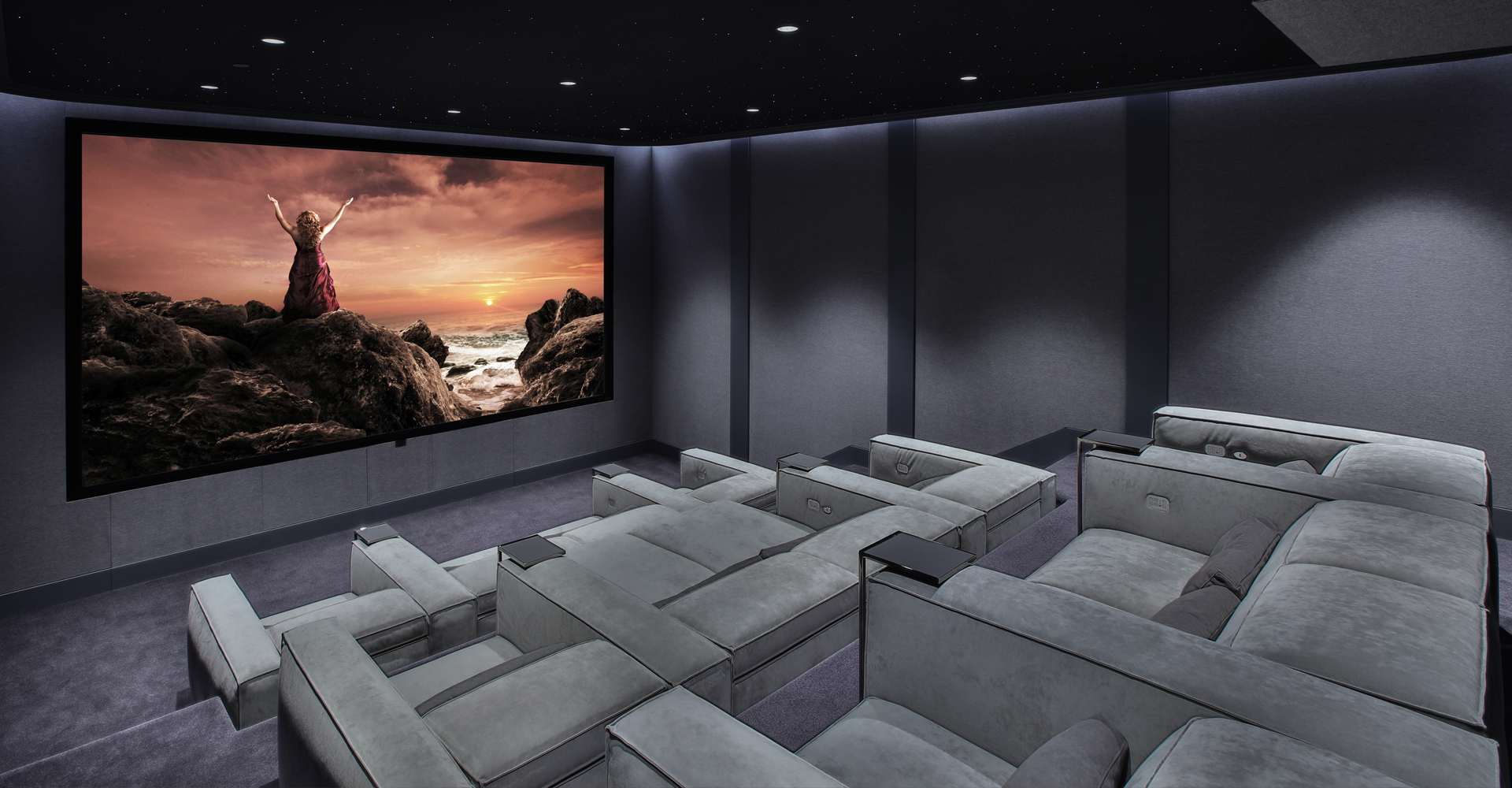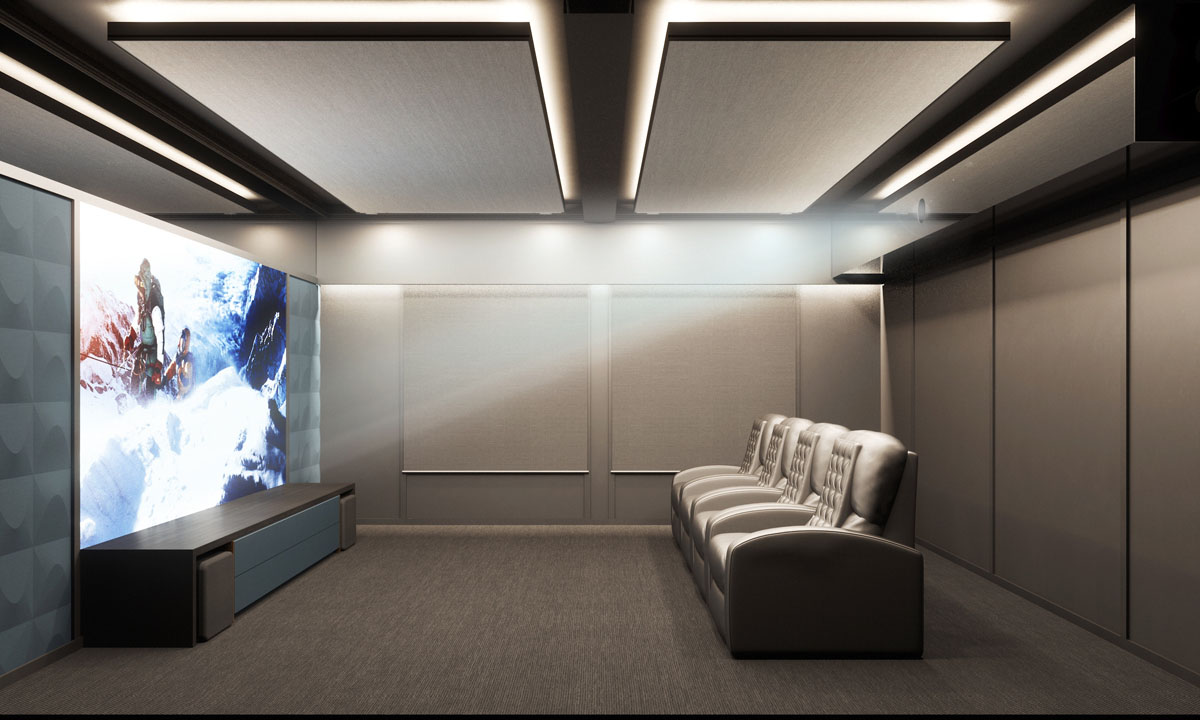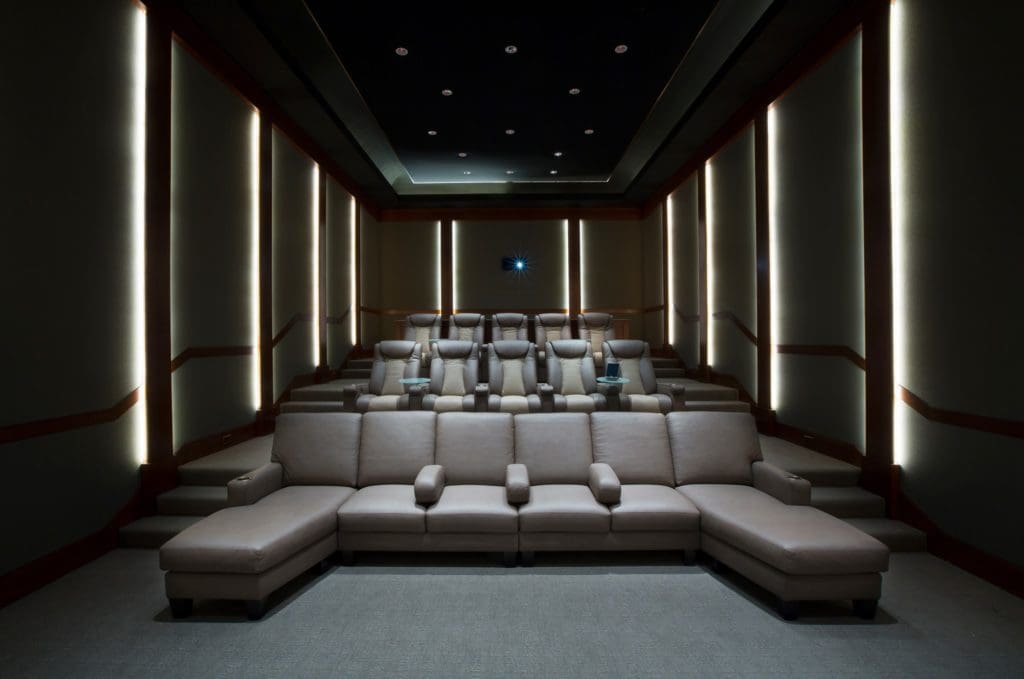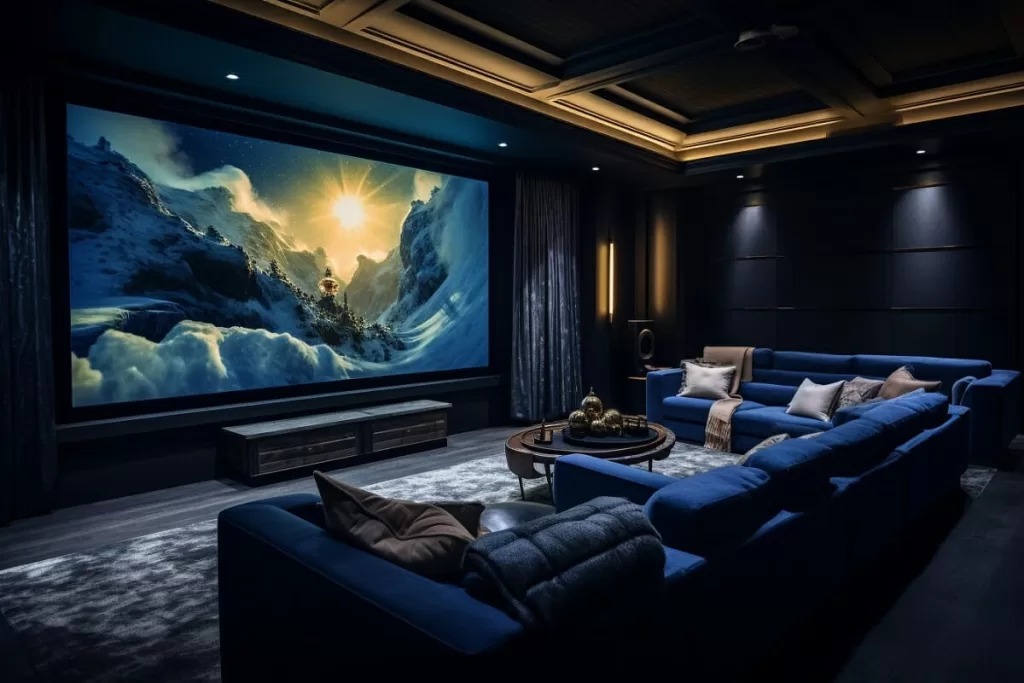Innovative Home Theater Tampa Designs for the Stylish Home
Innovative Home Theater Tampa Designs for the Stylish Home
Blog Article
Home Theater 101: Everything You Required to Know for a Cinematic Experience at Home
Producing a home theater that measures up to the cinematic experience of a commercial theater entails careful consideration of several components, consisting of screen option, audio systems, and area layout. Whether you are considering the perfect display size or the complexities of border noise, recognizing these principles is crucial.
Picking the Right Screen
When establishing a home cinema, picking the best screen can make or break the checking out experience - tampa home theater installation. The screen acts as the centerpiece of your configuration, influencing picture high quality, watching angles, and general visual. Trick elements to take into consideration consist of display resolution, kind, and size
Initially, identify the appropriate display size based upon your room dimensions and seating distance. A basic guideline is to rest roughly 1.5 to 2.5 times the angled screen dimension for optimum watching. Next off, select in between various screen types, such as fixed-frame, motorized, or retracting displays, each offering unique benefits. Fixed-frame displays normally provide the very best photo high quality, while motorized choices enable flexibility precede usage.
Resolution is another vital aspect. For a truly immersive experience, take into consideration a screen developed for 4K or perhaps 8K content, making sure intensity and quality. Furthermore, consider the screen's gain, which influences brightness and contrast; a greater gain can enhance brightness in well-lit rooms, while a reduced gain might be better for darker atmospheres.
Choosing Audio Equipment
Audio devices is a vital part of any home theater system, significantly improving the general watching experience. The selection of audio equipment can establish the depth, clearness, and immersion of noise, critical for creating a motion picture environment.
When choosing audio devices, think about a border sound system, which usually includes a receiver, multiple audio speakers, and a subwoofer. A 5.1 or 7.1 channel system is advised, where the initial number represents the speakers and the 2nd the speaker, offering an immersive soundscape. The receiver is the heart of the system, managing audio and video clip signals, and need to sustain modern-day formats like Dolby Atmos for a boosted spatial experience.
Quality speakers are important; seek designs that offer a balanced sound profile with good bass action. Floor-standing audio speakers can create richer sound, while bookshelf choices conserve area. Additionally, consider cordless alternatives for convenience of setup, although wired systems usually deliver premium efficiency.

Optimal Seating Arrangements
Developing an ideal home theater experience pivots substantially on optimum seating plans. The setup of seats plays an essential role in both convenience and watching high quality, straight affecting the overall cinematic experience.
First, think about the display dimension and checking out distance. A typical guideline is to position seats at a range about 1.5 to 2.5 times the diagonal dimension of the display. This makes certain an immersive experience without stressing the eyes.
Following, elevation is crucial. If your seating remains in a tiered layout, the back rows need to be more than the front to avoid blockages. For level seats, guarantee that the front row is not as well near to the screen, which everybody has a clear line of vision.
In addition, consider the plan in regards to social characteristics. Group seating can boost the communal experience, while private seats might be favored for individual viewing.

Lastly, prioritize convenience with ergonomic seating that supports extensive watching durations. Including recliner chairs or supported seats can considerably boost the experience, making the home cinema a favored location for both home entertainment and leisure.
Lighting and Ambiance
Effective lighting and setting are necessary parts of a well-designed home theater, as they dramatically influence the watching experience. The appropriate illumination can boost the cinematic feel, while bad selections can detract from it. For optimal outcomes, take into consideration a split lighting technique that includes ambient, task, and accent illumination.
Ambient lighting supplies basic lighting, ensuring that the area is not entirely dark, which can stress the eyes. Dimmer buttons are highly suggested, enabling modifications based on the material being seen. Task illumination, such as wall surface sconces or flooring lights, uses useful illumination for activities like reading or navigating visit this site the area without interfering with the overall environment.
Accent illumination can be utilized to highlight architectural functions or create centerpieces, adding depth and rate of interest to the space. LED strip lights behind displays or along racks can offer a refined radiance that boosts the visual experience without overwhelming the audience.

Wiring and Installation Tips
A well-planned wiring setup is important for accomplishing ideal performance in your home cinema system. Appropriate wiring not only makes certain high-grade audio and video clip signals however likewise enhances the overall visual of your space. Begin by mapping out your format, recognizing where each element will be placed, including your screen, speakers, and receiver.
When choosing wires, focus on premium, suitably assessed wiring to lower signal loss. HDMI cords must be utilized for video connections, while speaker cable ought to match the specifications of your audio speakers and amplifier. Go with in-wall ranked wires to adhere to safety standards and maintain a clean appearance.

Conclusion
In summary, producing a remarkable home cinema experience requires mindful consideration of various aspects, consisting of screen choice, audio tools, seating plans, lights, and wiring. By focusing on these aspects, a motion picture ambience can be efficiently replicated, allowing for immersive watching experiences that match typical theater settings.
Developing a home theater that rivals the motion picture experience of an industrial theater includes mindful factor to consider of multiple components, including display selection, sound systems, and room design.When establishing up a home movie theater, picking the ideal display can make or break the viewing experience. Next off, pick in between numerous screen types, such as fixed-frame, link motorized, or retracting screens, each offering unique advantages. For an absolutely immersive experience, consider a click reference screen made for 4K or even 8K material, ensuring sharpness and clearness.In recap, developing an extraordinary home movie theater experience calls for careful consideration of numerous aspects, consisting of screen choice, audio tools, seating arrangements, lighting, and electrical wiring.
Report this page